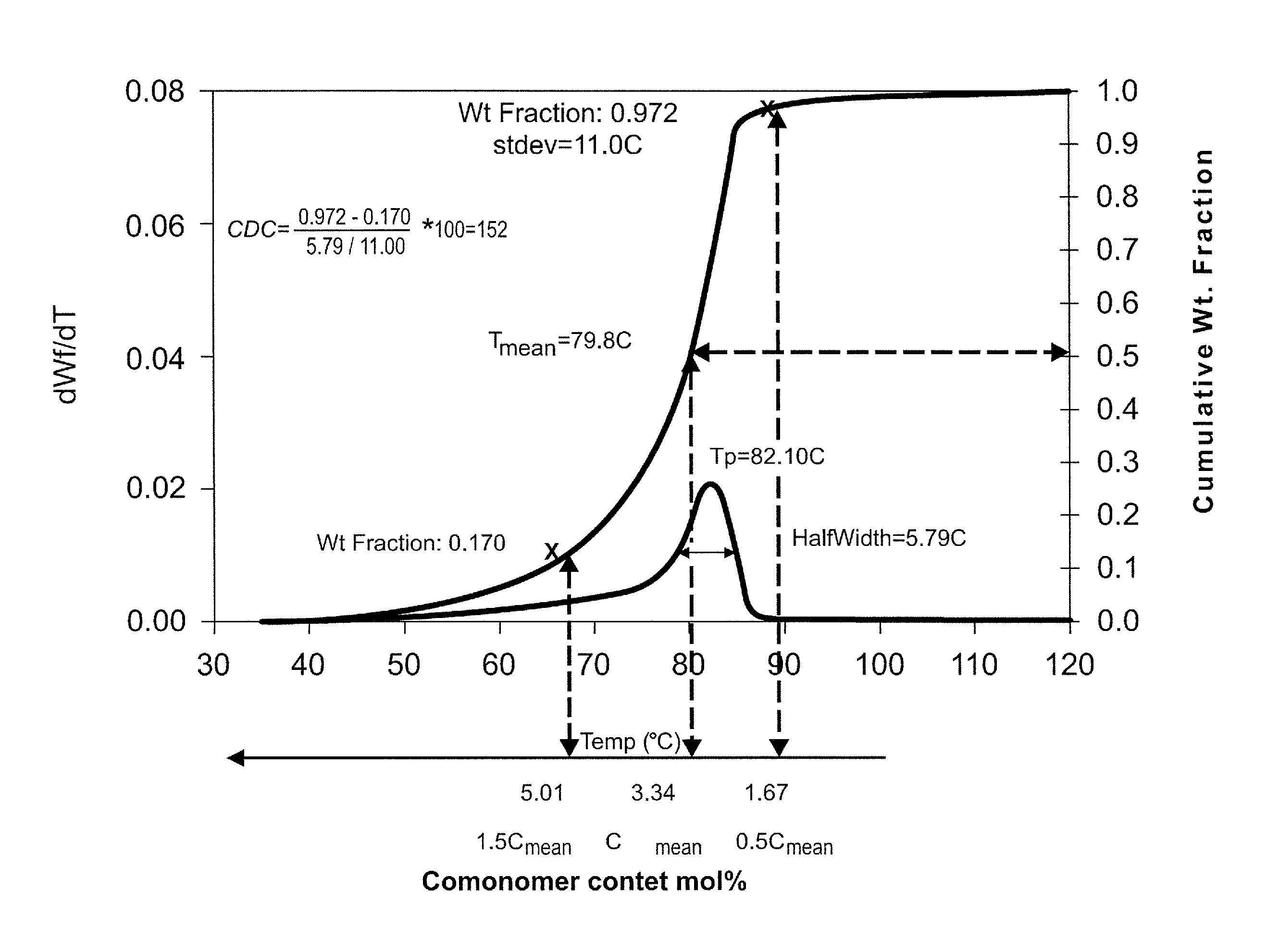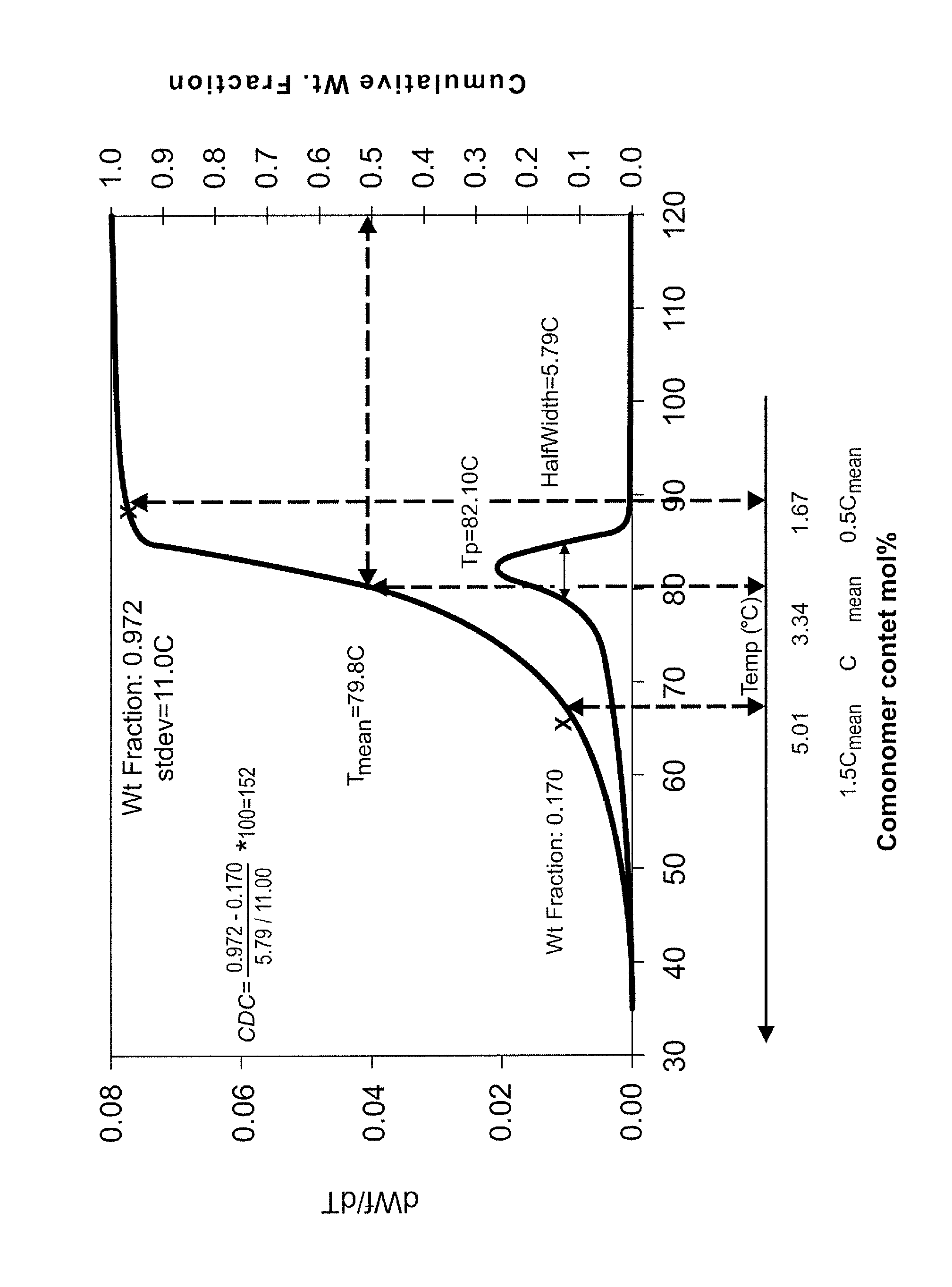Bicomponent fiber
a bicomponent fiber and fiber technology, applied in the field of new bicomponent fibers, can solve the problems of difficult spin, difficult to allow for fine denier, and polyethylene fibers, and achieve the effects of reducing costs, reducing costs, and sufficient strength
- Summary
- Abstract
- Description
- Claims
- Application Information
AI Technical Summary
Benefits of technology
Problems solved by technology
Method used
Image
Examples
examples
[0126]The present invention will be described in further detail with reference to the examples and comparative examples shown below:
[0127]
ComparativeComparativeComparativeComparativeInventiveExample 1Example 2Example 3Example 4PropertyExample(PT7009)(ASPUN ™ 6834)(DOWLEX ™ 2045)(ATTANE ™ 4606G)MI15.08.717.01.03.0Density0.9200.9180.9500.9200.912Tan delta at 0.1 rad / s24.48.044.208.6124.71Eta at 0.1 rad / s (Poise)968183642493522692Eta at 100 rad / s (Poise)2252552631654900CDC64.7114.582.843.837.8Tp (Peak recrystallization9795115105100temp) ° C. (From DSC)Fiber SpinningExcellentMediumExcellentGoodGoodFibers StickinessLowLowLowHighHighBonding to substrateExcellentlowAT high Templowlowat low tempAirlaid processGoodDifficultGoodlowlowFiber TexturizingGoodMediumGoodDifficultDifficult
[0128]In general for this application, a series of performance attributes are needed. First of all, the resin must be capable of forming a fiber in molten state at economically viable rates. Secondly, the resin mus...
PUM
| Property | Measurement | Unit |
|---|---|---|
| viscosity | aaaaa | aaaaa |
| recrystallization temperature | aaaaa | aaaaa |
| recrystallization temperature | aaaaa | aaaaa |
Abstract
Description
Claims
Application Information
 Login to View More
Login to View More - R&D
- Intellectual Property
- Life Sciences
- Materials
- Tech Scout
- Unparalleled Data Quality
- Higher Quality Content
- 60% Fewer Hallucinations
Browse by: Latest US Patents, China's latest patents, Technical Efficacy Thesaurus, Application Domain, Technology Topic, Popular Technical Reports.
© 2025 PatSnap. All rights reserved.Legal|Privacy policy|Modern Slavery Act Transparency Statement|Sitemap|About US| Contact US: help@patsnap.com



